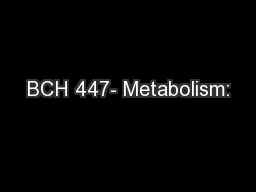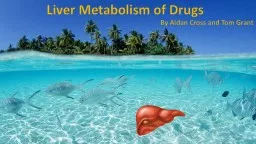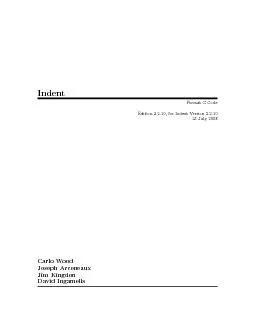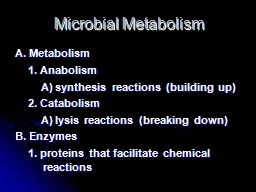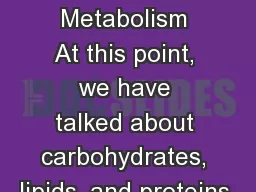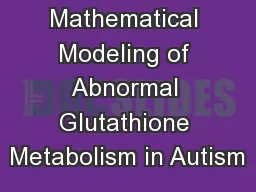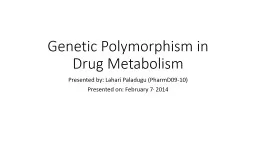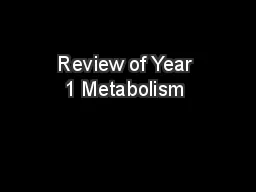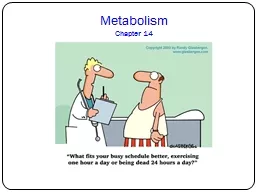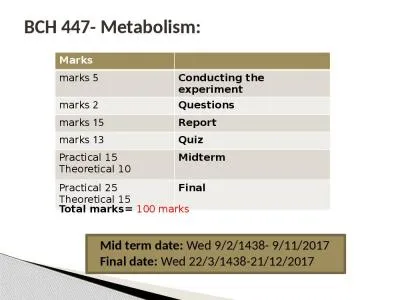PPT-BCH 447- Metabolism:
Author : alexa-scheidler | Published Date : 2017-09-05
Marks 5 marks Conducting the experiment 2 marks Questions 15 marks Report 13 marks Quiz Practical 15 Theoretical 10 Midterm Practical 25 Theoretical 15 Final Total
Presentation Embed Code
Download Presentation
Download Presentation The PPT/PDF document "BCH 447- Metabolism:" is the property of its rightful owner. Permission is granted to download and print the materials on this website for personal, non-commercial use only, and to display it on your personal computer provided you do not modify the materials and that you retain all copyright notices contained in the materials. By downloading content from our website, you accept the terms of this agreement.
BCH 447- Metabolism:: Transcript
Download Rules Of Document
"BCH 447- Metabolism:"The content belongs to its owner. You may download and print it for personal use, without modification, and keep all copyright notices. By downloading, you agree to these terms.
Related Documents

